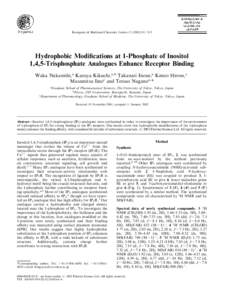<--- Back to Details
| First Page | Document Content | |
|---|---|---|
 Date: 2014-05-07 16:29:30Inositol IP3 Cell biology Adenophostin Proton NMR Signal transduction Chemistry Biology |
Add to Reading List |
| First Page | Document Content | |
|---|---|---|
 Date: 2014-05-07 16:29:30Inositol IP3 Cell biology Adenophostin Proton NMR Signal transduction Chemistry Biology |
Add to Reading List |